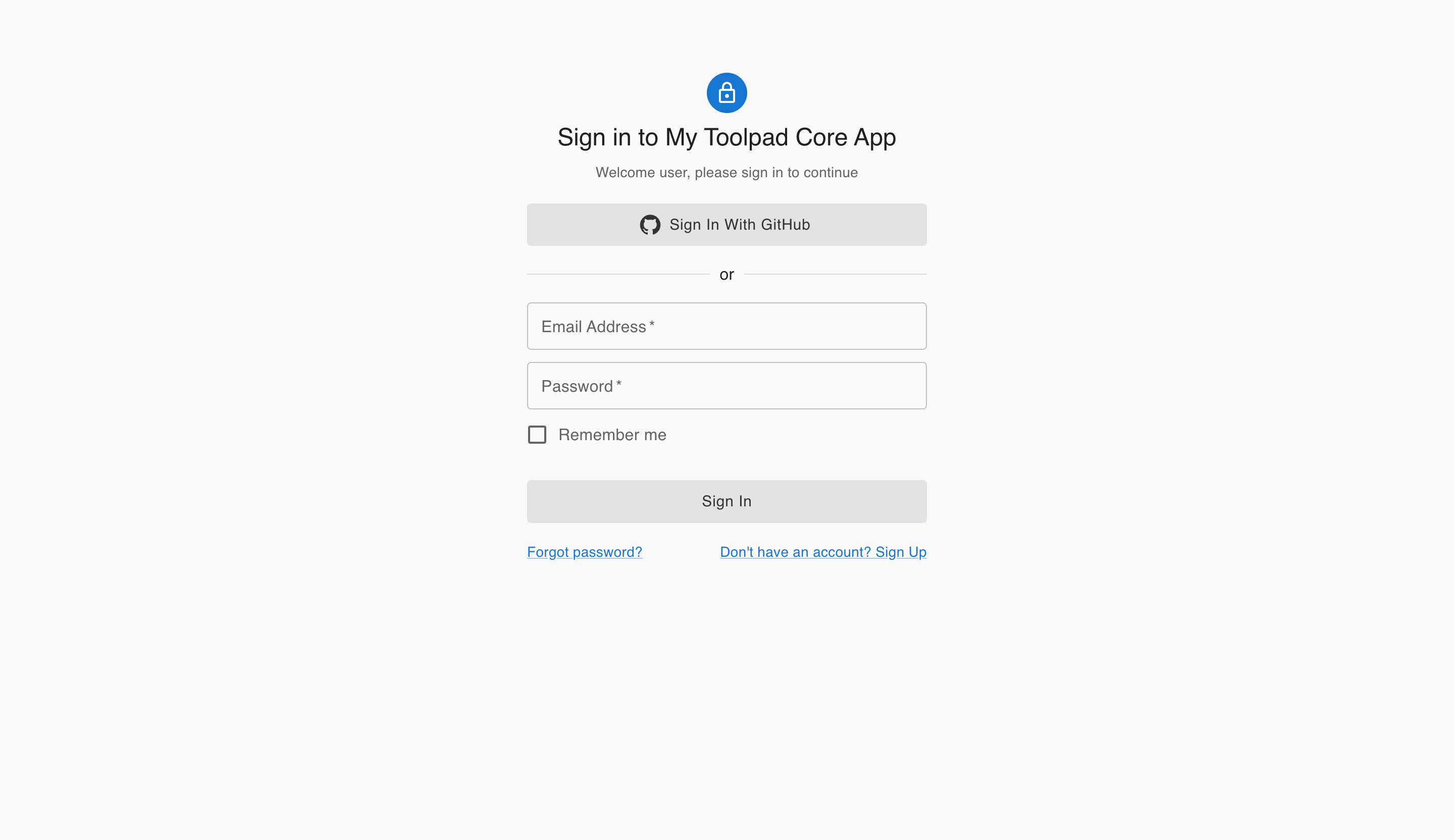Sign In Page
A customizable sign in UI component that abstracts away the pain needed to wire together a secure authentication page for your application.
The SignInPage component is a quick way to generate a ready-to-use authentication page with multiple OAuth providers, or a credentials form.
OAuth
The SignInPage component can be set up with an OAuth provider by passing in a list of providers in the providers prop, along with a signIn function that accepts the provider as a parameter.
Credentials
To render a username password form, pass in a provider with credentials as the id property. The signIn function accepts a formData parameter in this case.
Alerts
The signIn prop takes a function which can either return void or a Promise which resolves with an AuthResponse object of the form:
interface AuthResponse {
error?: string;
type?: string;
}
This renders an alert with the error string as the message.
Usage with authentication libraries
Auth.js
Next.js App Directory and GitHub
The component is composable with any authentication library you might want to use. The following is a SignInPage with Auth.js using GitHub, Next.js App router and server actions.

Auth.js & Next.js app router with Toolpad Core Sign In page
Setting up
If you're using the default Next.js app directory example, Auth.js is already installed. Otherwise, follow the installation instructions.
GitHub configuration
To get the required credentials, create an application in the GitHub developer settings. Read this guide on Auth.js on how to obtain those.
Server Configuration
The SignInPage component can slot in as a custom sign in page inside Auth.js:
// ...
export const { handlers, auth, signIn, signOut } = NextAuth({
providers,
secret: process.env.AUTH_SECRET,
pages: {
signIn: '/auth/signin', // you can customize this based on your requirement
},
// ...
You can then have a fully built GitHub sign in page appear at /auth/signin by adding SignInPage to page.tsx:
// ...
import * as React from 'react';
import type { AuthProvider } from '@toolpad/core';
import { SignInPage } from '@toolpad/core/SignInPage';
import { AuthError } from 'next-auth';
import { providerMap, signIn } from '../../../auth';
export default function SignIn() {
return (
<SignInPage
providers={providerMap}
signIn={async (
provider: AuthProvider,
formData: FormData,
callbackUrl?: string,
) => {
'use server';
try {
return await signIn(provider.id, {
...(formData && {
email: formData.get('email'),
password: formData.get('password'),
}),
redirectTo: callbackUrl ?? '/',
});
} catch (error) {
if (error instanceof Error && error.message === 'NEXT_REDIRECT') {
throw error;
}
if (error instanceof AuthError) {
return {
error:
error.type === 'CredentialsSignin'
? 'Invalid credentials.'
: 'An error with Auth.js occurred.',
type: error.type,
};
}
return {
error: 'Something went wrong.',
type: 'UnknownError',
};
}
}}
/>
);
}
Customization
Theme and Branding
Through the branding and theme props in the AppProvider, the SignInPage can be customized to match your own styles.
Components
SignInPage can be customized by passing in slotProps to the underlying components of the credentials form.
🚧 Composition
To enable deep customization beyond what is possible with custom props, the SignInPage component allows bringing your own custom granular components, such as inputs and buttons. This is in progress.
🚧 Layouts
The SignInPage component has versions with different layouts for authentication - one column, two column and others such. The APIs of these components are identical. This is in progress.
🚧 Other authentication Flows
The SignInPage will be accompanied by other components to allow users to sign up, verify emails and reset passwords. This is in progress.
API
See the documentation below for a complete reference to all of the props and classes available to the components mentioned here.